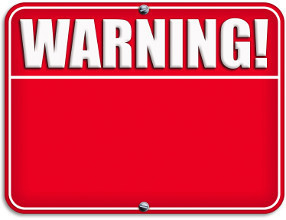Phyllis Zimbler Miller's Blog: Phyllis Zimbler Miller Author, page 52
April 21, 2011
The Third Excuse for Not Using the Power of Social Media
The third excuse I wrote about for a FastGush.com guest post on not harnessing the power of social media is:
3. People in my target market aren't on social media
And you would know this because how? Actually, you would probably be very surprised by who is active on social media with whom you'd want to connect.
And this isn't just potential clients or customers. It includes, among others, joint venture partners, journalists and bloggers.
If you aren't on social media, it's probably difficult for you to actually evaluate how many people in your target market are or are not active on Twitter, Facebook, LinkedIn, YouTube and any number of specialty social networking sites.
What's more, if these people are on social media and your competitors are on social media but you're not, what do you think might happen?
Yes, your competitors might be the ones making all kinds of new connections with potential customers or clients all over the globe while you're still paying for Yellow Book ads.
Let's think about this logically:
People use the Internet to find all kinds of information – and we have to assume that a certain percentage of your target market is using the Internet to find information on the types of products and services that you provide. And increasingly, social media activities are showing up in search engine results.
We can also assume that not all your target market may search online. And this does mean that those outreach activities that you currently do — and that provide a good return on investment — should be continued.
But effectively using social media to connect online with your prospective clients or customers enables you to add to your marketing mix. Social media sites offer you new places with which to showcase your expertise and attract prospective clients or customers.
This is where blogging can come in very handy. You write blog posts – or record short video posts – about information related to your products and services.
Then, even if part of your target market isn't on social media, you can share the links to your posts in a variety of ways (including email marketing). And you can even print out your posts and use these printouts as flyers in your brick-and-mortar locations or at live networking events.
Plus your information sharing online may come to the notice of journalists or other bloggers. You just never know where an online connection may lead to.
The bottom line is that showcasing your expertise online can be an effective marketing strategy both for your prospective clients or customers who are online and for those who are not yet online. For both groups you are offering a way to get to know you and your company better.
Now who wouldn't want to harness this outreach potential?
(You can read all 8 excuses now on FastGush.com.)
Plus read the blog post about the first excuse: "I don't have time to do social media"
And the post about the second excuse: "I have nothing to say on social media"
© 2011 Miller Mosaic LLC
Phyllis Zimbler Miller (@ZimblerMiller on Twitter) is the co-founder of the social media marketing company Miller Mosaic LLC.
Get the free information "8 Social Media Marketing Mistakes" and "Social Media Marketing Does Not Magically Work; You Have to Work It" at www.facebook.com/millermosaicsocialmedia

April 17, 2011
The Second Excuse for Not Using the Power of Social Media
Now we are at the second excuse of the top eight excuses I wrote about for a FastGush.com guest post. This post is the second of a blog series here at Miller Mosaic Social Media Marketing looking at each excuse in more depth.
2. I have nothing to say on social media
It's important to understand what content you should be sharing in order to create connections for your products or services. But you yourself don't have to say things. You only have to find worthwhile things that others say and share this.
This is where effectively using Twitter can come in very handy.
But let's start further back in the equation:
Having your own blog is an excellent search engine optimization strategy for your company website because search engines love fresh content. And if you are using your blog effectively, which means a minimum of two new posts each week, you will be supplying the search engines' appetite for new content.
Now you don't have to write all the posts yourself. You can have guest bloggers for some or all of the time. (One place to list guest blog post requests is at BloggerLinkUp.com)
If you do have a blog, you can share the link to each new post on your social media sites. For example, you can tweet the link on Twitter and then, using the application of selective tweets, you can send the link through to your company Facebook Page and your LinkedIn account.
But obviously this isn't enough material for sharing each week.
Now you use the search function on Twitter to find people sharing and writing content that is what Yael and I call "on the spine" of your brand. In other words, information related to the products and services that your company offers.
You can even create a Twitter list (public or private) of these people so that you can quickly check to see what they are tweeting.
Then you can retweet what these people share, providing information to your Twitter followers while potentially creating relationships with the people whom you retweet.
In addition, if you read any news articles or blog posts online that you think your followers might appreciate, you can tweet the link to those articles or posts.
You can even tweet links to YouTube videos or websites that you want to share with your followers.
Think of yourself as a curator for information that your followers are likely to appreciate. And while your curator role may at first feel somewhat awkward, once you have done this consistently for several days you should be quite comfortable in this new role.
(You can read all 8 excuses now on FastGush.com.)
Plus read the Miller Mosaic blog post about the first excuse: "I don't have time to do social media"
© 2011 Miller Mosaic LLC
Phyllis Zimbler Miller (@ZimblerMiller on Twitter) is the co-founder of the social media marketing company Miller Mosaic LLC. Get the free information "8 Social Media Marketing Mistakes" and "Social Media Marketing Does Not Magically Work; You Have to Work It" at www.facebook.com/millermosaicsocialmedia

April 13, 2011
Looking One by One at the Top 8 Excuses for Not Using the Power of Social Media Marketing
I wrote a guest post for the site FastGush.com on the "Top 8 Excuses for Not Using the Power of Social Media Marketing."
Now for the Miller Mosaic Social Media Marketing blog I'm planning to write a separate post on each excuse.
Let's take the first excuse in the guest post:1. I don't have time to do social media
Now this is often said by someone who is not active on social media already and doesn't really understand how to use it as a business tool. Thus the person has no idea how much time would be needed to be effective.
Yes, in the beginning it takes time to learn how to utilize social media effectively. But once the learning curve is gotten over and you have a specific strategy for your own company, you can participate effectively in about a total of 30 minutes per day five days a week.
Do you make time to brush your teeth every day? (Okay, flossing is another thing.) And do you periodically go to the dentist for a cleaning and a checkup?
Taking care of our teeth is a productive habit we've learned in order to hopefully prevent the need to have all false teeth when we're older.
Using social media to promote (NOT sell) our business is something we can learn to do in order to hopefully prevent our business from falling so far behind our competitors that we may never catch up.
If you don't yet believe that NOT adapting to social media can put your business at a huge disadvantage, spring for buying the new book THE THANK YOU ECONOMY by Gary Vaynerchuk.
Read the book and you should be convinced to jerk your head out of the sand where you may have been hiding until now.
Just like any other important personal or business activity, you learn how to do the activity well (or you learn its importance and then hire someone to do it well for you). Then you figure out how to strategically work the activity into your daily schedule.
If you are worried about getting addicted and having social media become a time drainer, then set an alarm clock for a specific set of minutes when you carry out your social media activity strategy. When the bell rings you're out of there – until the next timed session.
Or schedule your social media session as part of your morning coffee break. Instead of watching the latest joke videos on YouTube, drink your coffee while participating in social media conversations.
Yes, you may be giving up a few laughs. But you could be saving yourself from crying when your business goes down the tubes because you weren't paying attention to what is happening on social media sites.
It's like anything else that is worth doing. Once you understand the mechanics of the social media tools and have come up with a strategy for using the tools for your own business, you can get into the groove of effectively participating on social media.
Okay, so we've gotten rid of this excuse. Stay tuned for more excuse-banishing blog posts.
(You can read all 8 excuses now on FastGush.com.)
© 2011 Miller Mosaic LLC
Phyllis Zimbler Miller (@ZimblerMiller on Twitter) is the co-founder of the social media marketing company Miller Mosaic LLC.
Get the free information "8 Social Media Marketing Mistakes" and "Social Media Marketing Does Not Magically Work; You Have to Work It" at www.facebook.com/millermosaicsocialmedia

April 10, 2011
What You Need to Know Before You Get a Website
If you're thinking of having a website, STOP.
Just think of starting a business. First you need a business name. Then you need to rent land for where you are going to build your store. Then you need to tell people where your business is.
For the next step you can hire an architect to design your store and then have a construction crew build it. Or you could get a prefab structure, put it up very simply, and then have someone do some painting and buy furniture.
This is what you have to know when you want a website:
You have to get a domain name. (A domain name is like a business name but does not need to be the name of your business.) It could be www.mysiteisbetterthanyoursite.com or anything — www.moreshoes.com
First you have to buy the name. You can buy it from Go Daddy.
Go Daddy is well-known because of all the money the company spends for Superbowl ads. And Go Daddy rates are cheaper than a lot of places.
But I've never had a good experience with Go Daddy. I've never had an experience where someone who uses Go Daddy hasn't had problems.
At Miller Mosaic we buy our domain names from Register.com
So you've bought your domain name.
Now you have to figure out where your website is going to live (where you're renting space).
You have two options:
You can go with a web hosting company.
You can go with a person — designer or whatever — who says "I will host your website."
I do not recommend the second option — hosting with an individual.
Here's the reason why:
If you go with a big company, if it is a good company you have 24/7 support. And, yes, if you violate the terms of service the company might shut you down. But that's a minor consideration as long as you stay within the rules.
However, if you go with just a person, suddenly human emotions enter in. Something happens and the person may hold your site hostage. You don't want that to happen.
So you rent your website space from a web hosting company.
The next step is you have to tell people where your business is.
What this means in website terms: You have to go to where you bought the domain name — Go Daddy or Register.com or something else. And there's a spot where you have to point your domain name to your new web hosting company.
Then once the name is pointed to where the site will be hosted, you build your website on the host server of your web hosting company.
You could hire a web designer/web developer to design an entire website from scratch. But that could take months and months and lots of money.
Or you could use what Miller Mosaic recommends — use WordPress, which is a Content Management System.
This is like buying a prefab structure. It goes up really quickly and you know everything works. You could put it up yourself or hire someone to do it.
Then it needs a little touchup work — some furniture and to paint the outside storefront. You can get someone to do that custom — what's called a custom theme if you want to pay for it. Or you can get an already made theme and customize it from that. Either you do it or someone else does it.
These are the steps:
Buy the domain name.
Buy the host server — actually you are renting space from a web hosting company.
Point the domain name to the host server.
Create the website in whichever manner you choose.
That's it. So don't get confused by technical jargon or anything else.
Know what you are getting into before you hire anyone to build your website.
© 2011 Miller Mosaic LLC
Yael K. Miller (@MillerMosaicLLC on Twitter) is the co-founder of the social media marketing company Miller Mosaic LLC. Get the free information "8 Social Media Marketing Mistakes" and "Social Media Marketing Does Not Magically Work; You Have to Work It" at www.facebook.com/millermosaicsocialmedia

April 7, 2011
Social Media Advice I Gave to the Beverly Hills Leads Club
At the end of our weekly meeting we were challenged to each give an example of what we planned to do in the following year to try out new things so that our business wouldn't be left behind.
Several members talked about their realization they need to use social media to promote their businesses. And one person talked about her emotional block to taking this step.
Back at my computer, I wrote an email to the head of our chapter asking if he wanted to share the following information with our chapter members.
He did – and I'm going to offer the same info (including discount code) to the readers of this blog that I'm offering to my fellow Leads Club members:
Social Media 3-Part Webinar Series and LEADS Discount
Go to www.millermosaicllc.com/3-part-series and click through to the shopping cart — put LEADS in the coupon box and click APPLY and watch the price change from $75 to $50 and then pay online.
Once you have done that we will send you the link to the password-protected video recordings that we have already done. These are video recordings that show you exactly where to click, etc.
Help With Having an Open Mind to Learning New Things
I highly recommend the book (get the paperback on Amazon) MINDSET: THE NEW PSYCHOLOGY OF SUCCESS by Carol Dweck. It is extremely well-written and can be life-changing.
Then consider reading the brand-new book THE THANK YOU ECONOMY by Gary Vaynerchuk (inexpensive hardcover on Amazon). @garyvee (on Twitter) tells you exactly why you won't be in business in the long run if you don't start adapting to social media opportunities now.
Now it's your turn to step up to the plate and learn how to use social media marketing to promote your brand, book, cause or business.
© 2011 Miller Mosaic LLC
Phyllis Zimbler Miller (@ZimblerMiller on Twitter) has an M.B.A. from The Wharton School and is the co-founder of the social media marketing company Miller Mosaic LLC.
"Like" our new Facebook Page to get the free information "8 Social Media Marketing Mistakes" and "Social Media Marketing Does Not Magically Work; You Have to Work It" at www.facebook.com/millermosaicsocialmedia

April 6, 2011
Who Is NOT a Good Candidate for Social Media Marketing?
Miller Mosaic was referred a potential social media client – someone who has a day job and recently launched a website to sell his particular expertise to a particular demographic.
He had sent emails from two lists and had gotten very little response. He wanted to know about social media marketing.
I replied with some specific information before finding him on LinkedIn and sending him an invite connection.
I got a reply back that he was an "untechie" and didn't know how to connect on LinkedIn. (Perhaps his day job company put up his profile.)
That's when I knew social media marketing was unlikely to be for him. A "techie" to me is someone who can program in html or some other software program.
Social media participation can be done by people who have Internet access, send emails (thus presumably can use a keyboard), and who are willing to have an open mind to learning how to do a few new things online (many of which involve typing).
Here is what I emailed this person as a short answer to using social media for promoting a business:
• You need to be active on the top social media sites with marketing-perspective social media profiles
• You must be committed to spending (or having someone spend on your behalf) at least 30 minutes in total time five days a week as part of an overall marketing strategy
• Your website must be social media friendly as well as search engine friendly
Bottom line? While social media participation can level the playing field with businesses that have large advertising budgets, it isn't an overnight miracle worker to attract clients or customers to your business. Social media participation requires commitment over the long haul.
I often find that people's fear of failure prevents them from trying new things. If this statement resonates with you, I recommend Carol Dweck's book MINDSET: THE NEW PSYCHOLOGY OF SUCCESS.
And if you still decide to stick with sending out emails to a cold list, do you know the expression "you get what you pay for"? Imagine this expression as "you get what you put in."
© 2011 Miller Mosaic LLC
Phyllis Zimbler Miller (@ZimblerMiller on Twitter) is the co-founder of the social media marketing company Miller Mosaic LLC.
Get the free information "8 Social Media Marketing Mistakes" and "Social Media Marketing Does Not Magically Work; You Have to Work It" at www.facebook.com/millermosaicsocialmedia

April 5, 2011
7 Twitter Misconceptions
Let me clearly state the answer to probably the biggest Twitter misconception of all:
• You do NOT have to use a smartphone to access Twitter. In fact, though I have a smartphone, I only access Twitter through its site http://twitter.com
Now let me clear up some misconceptions that affect utilizing Twitter for connecting with people for your business marketing goals:
• One tweet (Twitter update) a day is NOT enough to show commitment to the Twitter community. Twitter is a two-way conversation – one 140-character tweet a day is not a conversation.
• Unless you are a celebrity you DO need to follow people back in order to demonstrate interest in what others are sharing on Twitter.
(I checked out the Twitter profile of a professional who has a LinkedIn group. He follows 0 people on Twitter. Would you follow such a person?)
• Correct spelling DOES matter on Twitter. While it is okay to use abbreviations to fit your tweet into the 140-character limit, do spell complete words correctly. If spelling is not your thing, create your tweets in Word, correct your spelling errors, and then copy your tweet into Twitter.
• Offline manners ARE a good thing to practice on Twitter. Just as you say thank you to someone who does something nice for you offline, say thank you to someone who does something nice for you online.
• Twitter is NOT just about your business. It IS about sharing information connected to your brand that might interest your followers.
• It IS a good idea to share the link of an article about which you are tweeting. It does not help others to tweet "Great article in today's Daily Variety about tax credits." It does help others if you tweet "Great article in today's Daily Variety about tax credits. [link to article]"
Learning how to use Twitter effectively for your business is the same as learning other new skills – the more you practice correct techniques the better you'll become.
© 2011 Miller Mosaic LLC
Phyllis Zimbler Miller (@ZimblerMiller on Twitter) is the co-founder of the social media marketing company Miller Mosaic.
On Wednesday, April 6, at 4 pm Eastern she will be interviewed on Twitter in a twitterview about her novel "Mrs. Lieutenant." Even if you are not on Twitter you can watch the interview. At start time go to http://twitter.com and put #emlyn in the search box. You'll get the real-time feed of all comments with that hashtag (#emlyn).

March 31, 2011
Social Media Marketing Is Only Part of a Biz Marketing Plan
Obviously I'm a huge fan of social media as the company I co-founded is a social media marketing company.
But my business partner Yael K. Miller and I also know that social media by itself is not the whole picture for a company's marketing.
Yes, we just got back from a live networking event here in Los Angeles. But this isn't what I mean by the above statement.
What I mean is that, before social media marketing can be effective, you first have to know some basic marketing info about your business:
1. What is the USP (Unique Selling Proposition) of your company and its products and services? (Hint: Price probably shouldn't be the answer.)
2. Who makes up the target markets for your USP? (Not just demographics but actual niche definitions.)
3. Where do these target markets hang out online? What do they like to do online?
4. What do they need to know about you, your company, your products and services in order to be motivated to buy from you?
5. What factors can positively impact their buying decisions when it comes to your products and services? What factors can negatively impact their buying decisions?
6. Is your USP clear to your target markets? Or are they left wondering what exactly you are offering to them?
The above list is only some of the questions a business should be able to answer before integrating social media marketing into the business' overall marketing strategies.
What other questions do you think are important to answer?
© 2011 Miller Mosaic LLC
Phyllis Zimbler Miller (@ZimblerMiller on Twitter) has an M.B.A. from The Wharton School and is the co-founder of the social media marketing company Miller Mosaic. You can learn about her fiction and nonfiction books at her Amazon author page at http://budurl.com/PZMAmazonpage

March 30, 2011
Be Social Media Savvy If Launching a Website for a New Business
If you are launching a website for a new business, it is important to make that website social media friendly.
As I wrote in the blog post "Facebook Has Forever Changed the Face of Small Business Marketing":
Thanks to repeatedly seeing personal profiles on Facebook, LinkedIn, Twitter and other social media sites, we expect names, photos and bios of the owners of the businesses we're considering for the purchase of products or services.And if we don't see this information, we may decide to take our business elsewhere.
Because of this, I was surprised when I checked out the websites of two people, each switching from their current business to a new business. Each person's photo was nowhere on the site (or at least not anywhere that I tried looking).
As social media more and more impacts how consumers make buying decisions – and especially in businesses where the personality of the business owner is very important (true for both these businesses) – including a good headshot of yourself is absolutely essential.
And that headshot should probably be on the home page or at least on another main page and definitely above the fold (viewed without the need to scroll down the page).
If you really, really, really do not want to put your own photo on your site, then have an artist create an interesting graphic for you to use on your site and on social media sites. (For an example of an excellent personal graphic, see http://twitter.com/CathyGoodwin )
Check your own website now to see if your photo is prominently displayed on your site. And even if you are the CEO of a very large corporation, if you are active on social media sites under your own name, the same photo you use for social media profiles should be on the company website.
You do not want people to experience a disconnect going from your social media activity to your company website, where they are met with faceless corporate promotion.
If you'd like to know what other important social media friendly website elements are missing from your website, check out our Miller Mosaic website review. You might be amazed to learn what your site is missing.
(c) 2011 Miller Mosaic LLC
Phyllis Zimbler Miller (@ZimblerMiller on Twitter) has an M.B.A. from The Wharton School and is the co-founder of the social media marketing company Miller Mosaic LLC.

March 27, 2011
Start Your Online Biz by Knowing Who and What You Are
I checked out the website of someone who followed me on Twitter. I watched the site's brief video, and the idea behind the new offering seemed very innovative.
I then looked all over the site to find out whose idea this was. Nada.
Being an armchair detective, I deduced that perhaps the site founder had used his own name in the video that showcased the site concept.
I did a search on this name and found him on Facebook, where I sent him a friend request explaining that I had just used the site's contact form to send him feedback about the site.
To cut to the chase, a series of emails went back and forth, including the question of how did I find him on Facebook.
As this is a brand-new social media concept and a new company, I suggested that it would be a good idea to have the photos and names of the company founders up front on the home page. The reply was that the site was planning on putting this information on the About page.
(In addition, the tagline for the site is rather sterile instead of emphasizing the Unique Selling Proposition of this new social media tool.)
Then I asked about the meaning of the company/site name, which I personally found off-putting (although I politely didn't say this).
The reply was that the domain name for the site was obtained before the product was created. The company plans to sometime in the future change the company/site name.
Here's why I'm shaking my head as I write this blog post:
Just because social media has leveled the playing field and given small as well as large businesses the opportunity to engage with people does NOT mean that good old-fashioned marketing principles have been dumped on the trash heap.
The concepts of effective marketing are extremely important whether you are using traditional advertising channels or new social media channels.
Why would people invest a lot of money into a new company and a new social media product and then not follow the best practices of social media engagement?
And why introduce your product on Twitter with a company/product name that makes no sense and that you plan to change at some future date?
This disconnect boggles my mind. And it's not an isolated case.
I also checked back on a website whose owners I had spoken to several months ago. This new site has very interesting products and a good USP. But you wouldn't know either of these elements thanks to the lack of social media relationship building on the site and on social media platforms.
This is another company that spent money launching a site and selling products but is NOT taking advantage of the power of social media.
Enough said. But if you missed my book review on "The Tao of Twitter" by Mark W. Schaefer (@markwschaefer), read the review now. And also read the insightful post comment by a fan of the book.
(c) 2011 Miller Mosaic LLC
Phyllis Zimbler Miller (@ZimblerMiller on Twitter) is the co-founder of the social media marketing company Miller Mosaic LLC.
Phyllis and company co-founder Yael K. Miller (@MillerMosaicLLC on Twitter) have an upcoming social media 3-part webinar series this Tuesday (March 29) to help people become comfortable with the concepts of LinkedIn, Facebook and Twitter. Learn more now.

Phyllis Zimbler Miller Author
- Phyllis Zimbler Miller's profile
- 15 followers













